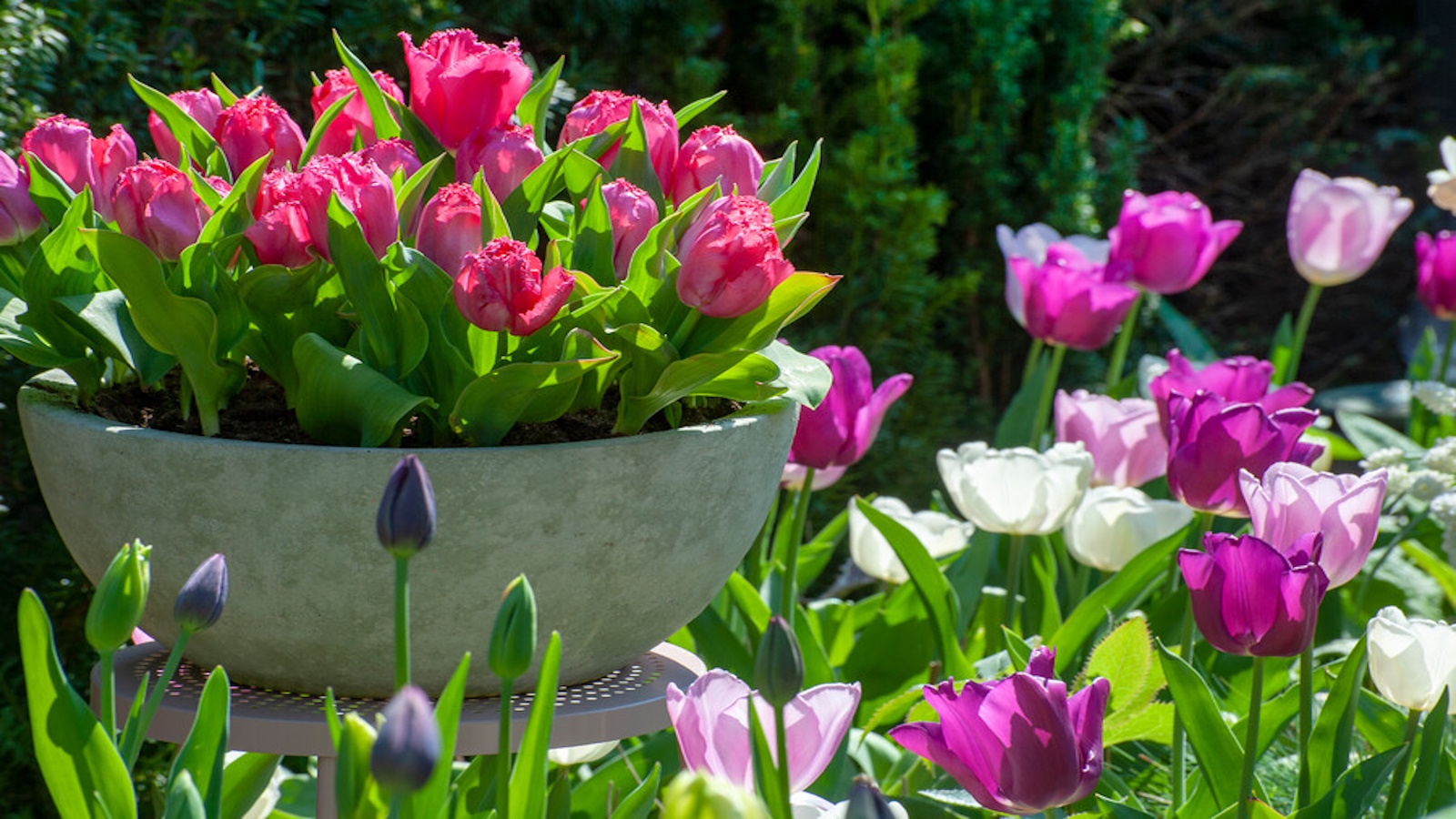
Tulips are the showiest of all spring bulbs. Coming in a vast array of colors – including the most flamboyant of combinations – there’s a tulip type for every taste and style.
These blooms are also hugely diverse in shape and size, so before you get started planting tulip bulbs, it’s worth getting to know them a little better and find out which will perform best in different parts of your yard. From delicate species tulips to fascinating parrot tulips, they will bring cheer to spring lawns, borders, pots and window boxes.
‘The world of tulips is enormous, boasting different colors, heights and textures to satisfy every gardener,’ says Max Apton, owner of garden design company Sweet Clover Design. ‘For this gardener, it's less about choosing which tulip is my favorite and more about planting complimentary colors - think deep purple and light pink or white and yellows. Be sure to check the bloom time of your various tulip types if you want to orchestrate a stunning spring light show.’ We have picked out seven of the best tulip types and gathered expert insight on where to plant them, and what makes them so great.
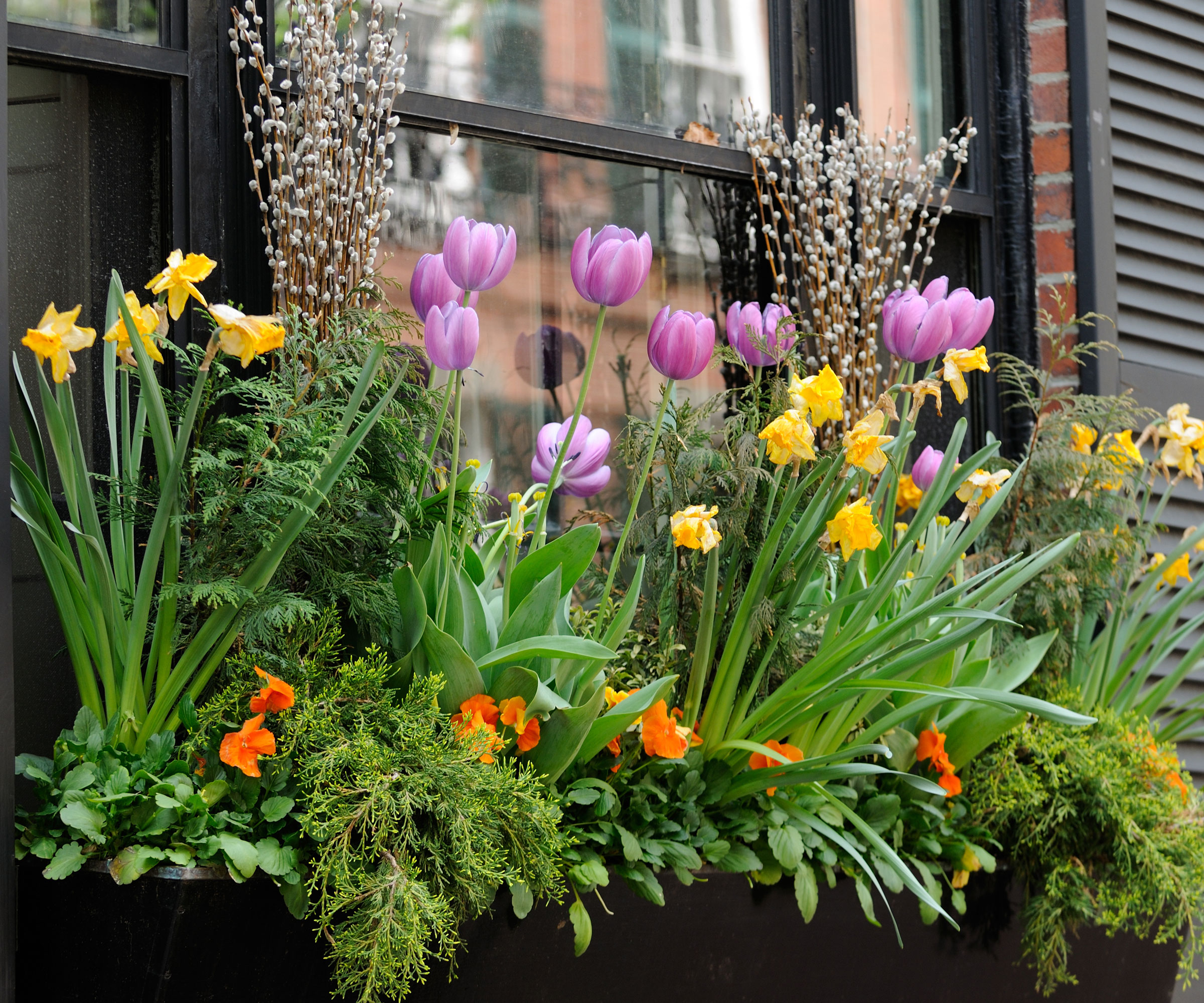
7 of the best tulip types
There are more than 3,000 registered varieties of tulips, which fall within 15 groups - or types. We shine a light on seven of those groups here.
Fosteriana tulips
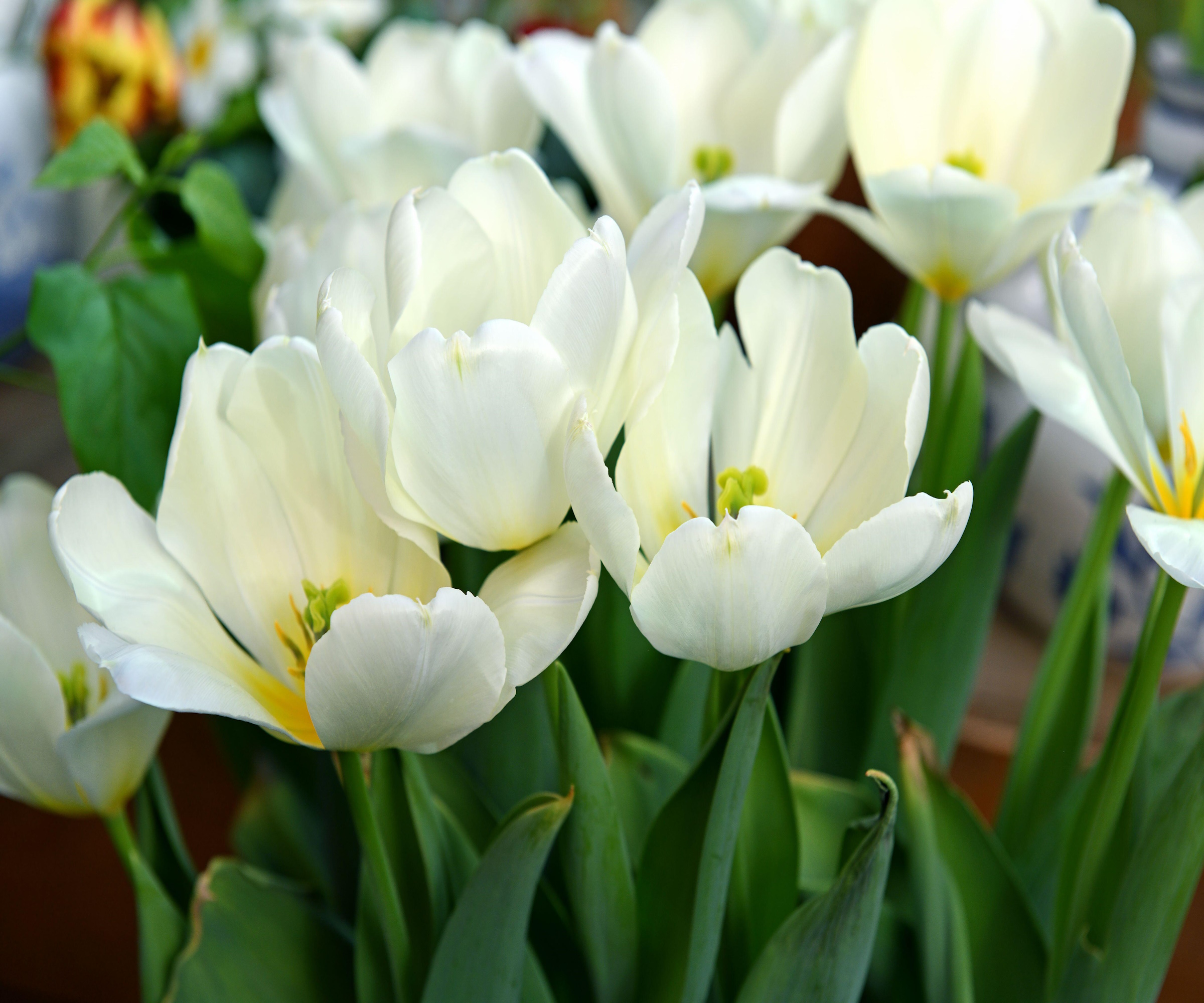
Well known for their reliability and bright colors, these tulips tend to have slender, cup shaped blooms that come in a wide variety of colors and heights.
‘Also known as Emperor tulips, they originate from the mountainous region of Asia which makes them hardy and able to naturalize easily, even in more drought-like conditions,’ explains bulb expert Katie Sunderlage.
‘Due to their versatility, these tulips work well in containers, in rock garden ideas, as borders or even naturalizing in grass. To make a big impact in your spring garden, plant bulbs in bunches to create a bouquet effect.’
A further bonus is that many Fosteriana tulips are fragrant. Check out early flowering ‘Purissima’ with its creamy-white blooms that sit on strong stems around 20 inches (50cm) tall, or try blush pink ‘Sweet Sixteen’ at just 12 inches (30cm) high.
Species tulips
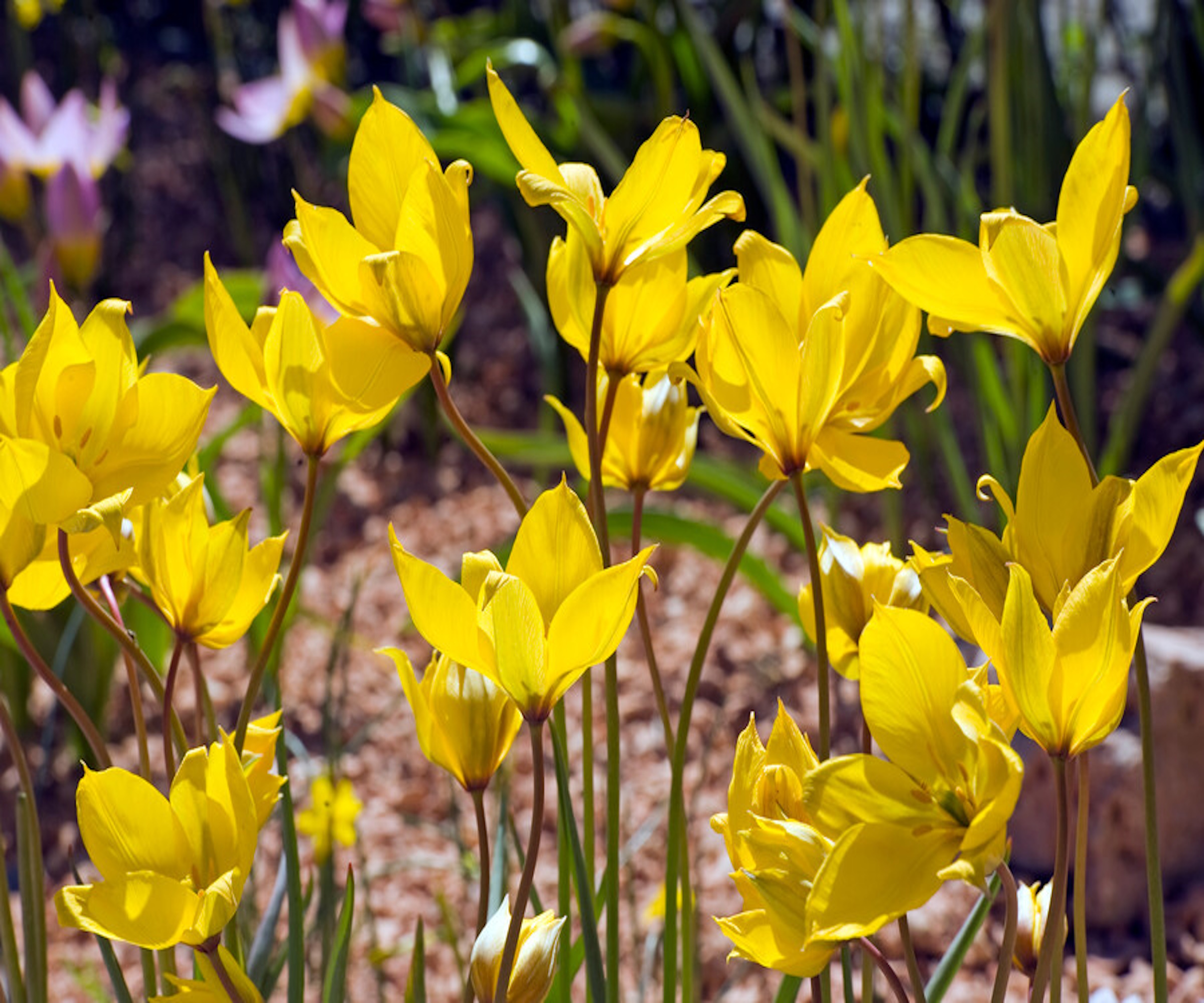
A delicate splash of early spring color, species or botanical tulips are an ideal choice for naturalizing under deciduous trees and shrubs, clustered together in rock and gravel gardens or in containers.
With many of these varieties having striped variegated foliage, they bring interest to the garden for weeks on end as well as a touch of elegance with their cup-shaped blooms. Shorter than most other tulips they cope admirably with exposed conditions, although hate sitting in waterlogged soil.
‘My favorites for pots are species tulips that come with names like Lady Jane, Lilac Wonder, Tinka, and Tschimganica (pronounced chim-GAN-ih-kuh). These selections, in the middle of a pot, shoot out like a fountain of botanical fireworks,’ says bulb expert Chris Wiesinger.
‘The blooms open more like star shapes than cups, coaxed open by those sunny spring days we love. For a more formal potted planting of tulips, stick with the more rigid cup-shaped Darwin hybrids. Those selections will also give you just about any color you can imagine, so matching color themes and preferences is much easier with these large cup-shaped tulips.’
Triumph tulips
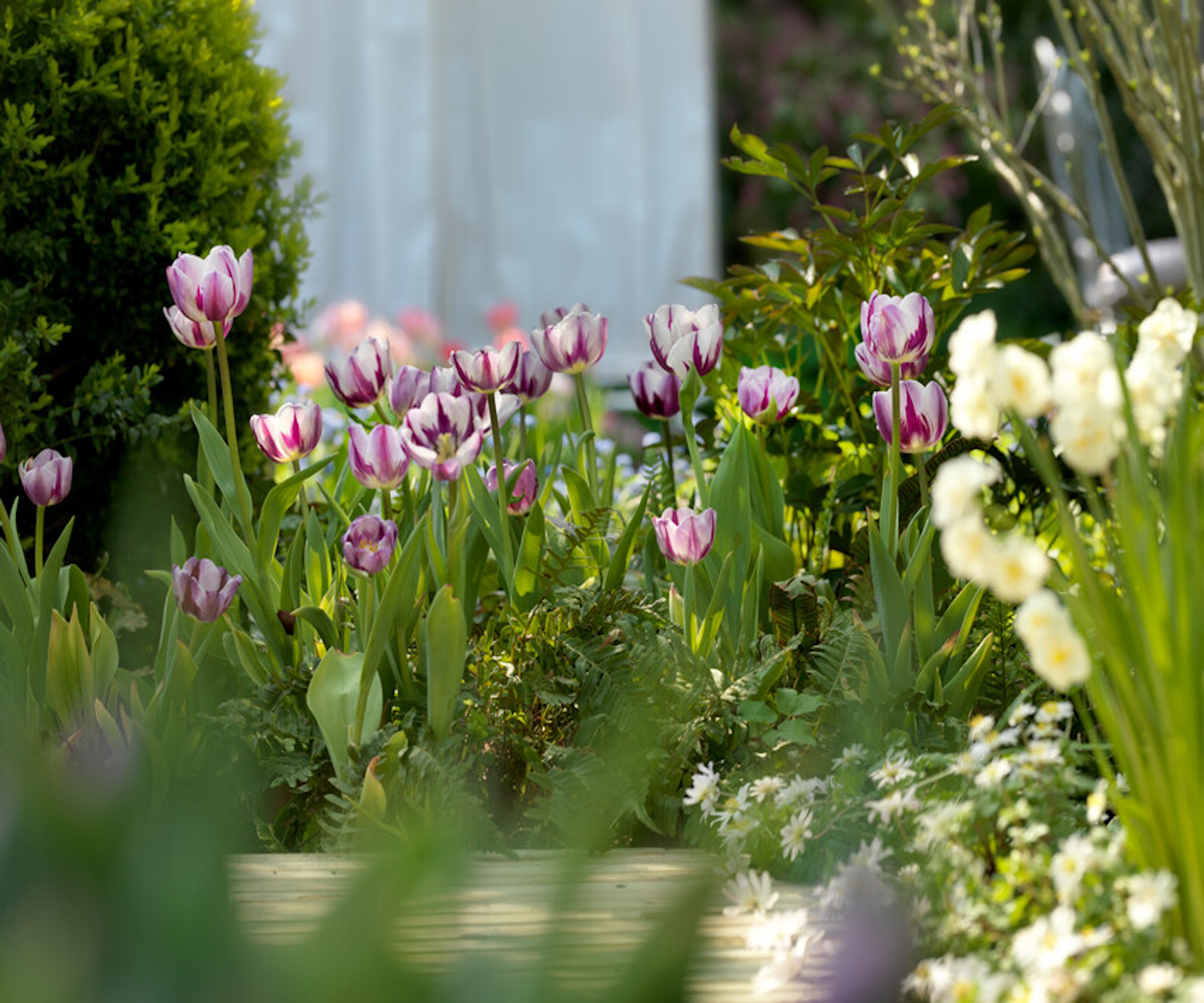
Perhaps the most popular and recognisable groups, Triumph tulips come in a wide range of colors, including many two-toned and striped varieties. With strong and sturdy stems, they are known to hold up to strong winds and heavy spring rain showers, so perfect for lining paths, driveways and bringing color to borders. They are also ideal for cutting.
Growing between 12-22” tall (30-55cm) in full sun they, prefer rich, fertile well-drained soil.
‘Crown of Dynasty Triumph Tulip is one of the newest varieties and it’s already becoming a favorite,’ says Katie Sunderlage. ‘The wavy edges of the petals give this variety such a unique look not seen on many other varieties.
'Each petal also has an ombre affect with lighter pink on the bottom becoming darker toward the top. The color also becomes more saturated as it matures.’ She also adds , ‘Flaming Agrass Triumph Tulip is another favorite'. Bright white with yellow streaks and stripes, each petal bears a feather effect.
Mesmerising Rembrandt tulips, with their bold, painterly brushstrokes of color, fall within this group. Once highly prized for their beauty and rarity, they were at the center of Tulipmania in 1636-37, where a single bulb 'Semper Augustus' is reputed to have been valued at 10,000 guilders (US$5.5k).
Today we know the intricate petal markings were the result of the so-called ‘tulip breaking virus’, which gradually weakens the bulb, causing each of the spectacular blooms to be extremely short lived. Current Rembrandt tulips include the bewitching claret and gold 'Absalon'; red, yellow and purple 'Saskia'; and the sunset-inspired yellow, red and orange 'Rubens'.
Greigii tulips
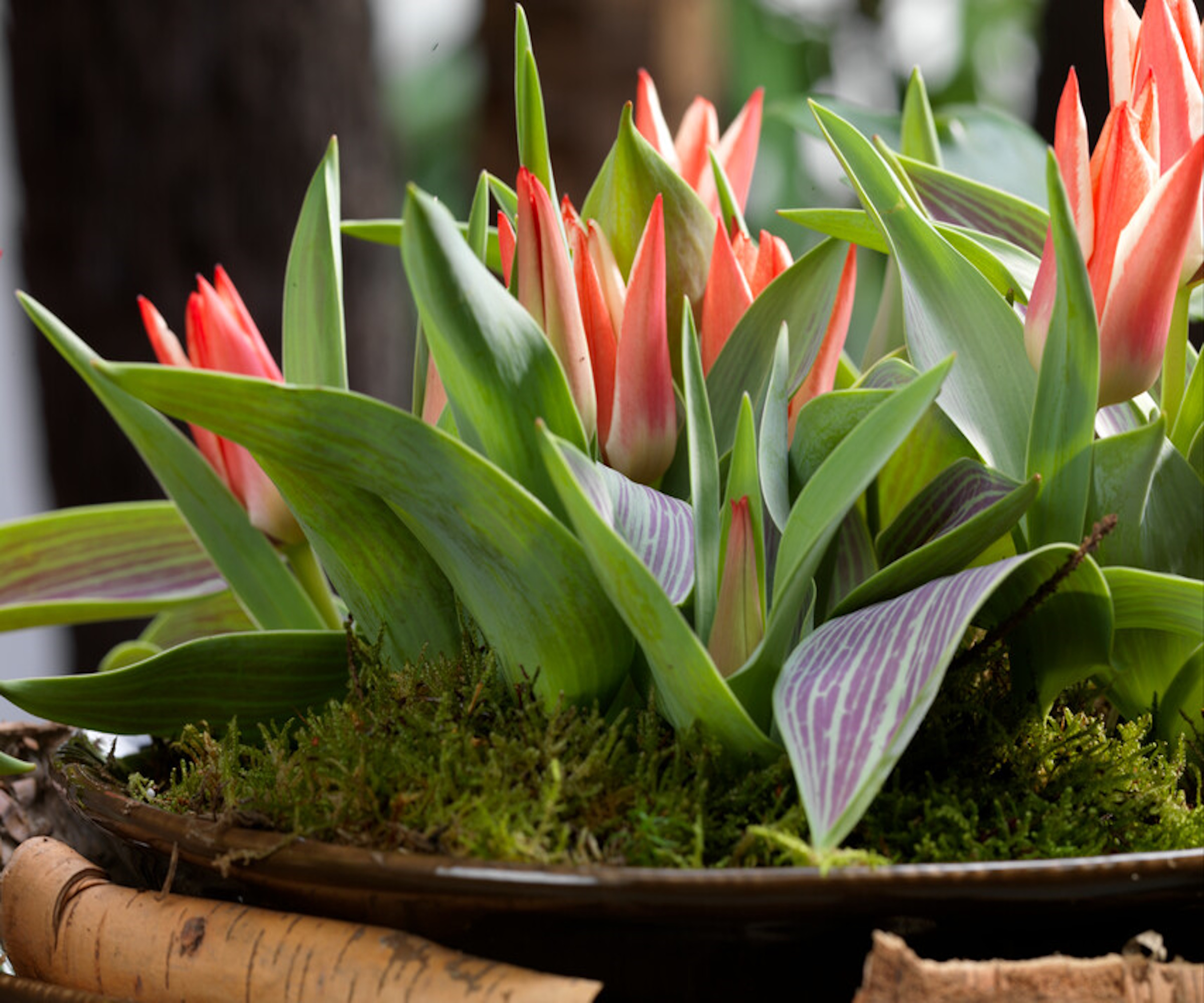
With shorter stems – just 8-12 inches (20-30cm) tall – and bold blooms, these tulips are perfect for a sunny rock garden, alpine border or a large container.
With a huge range of colors to choose from, there’s a variety for every planting palette and personal taste. From pale and dreamy ‘Haute Couture’ to fiery ‘Winnipeg’ these miniature flowers are real head turners, and many have the added bonus of striped foliage too.
Discover when to plant tulips and the myriad of other miniature bulbs to combine them with.
Parrot tulips
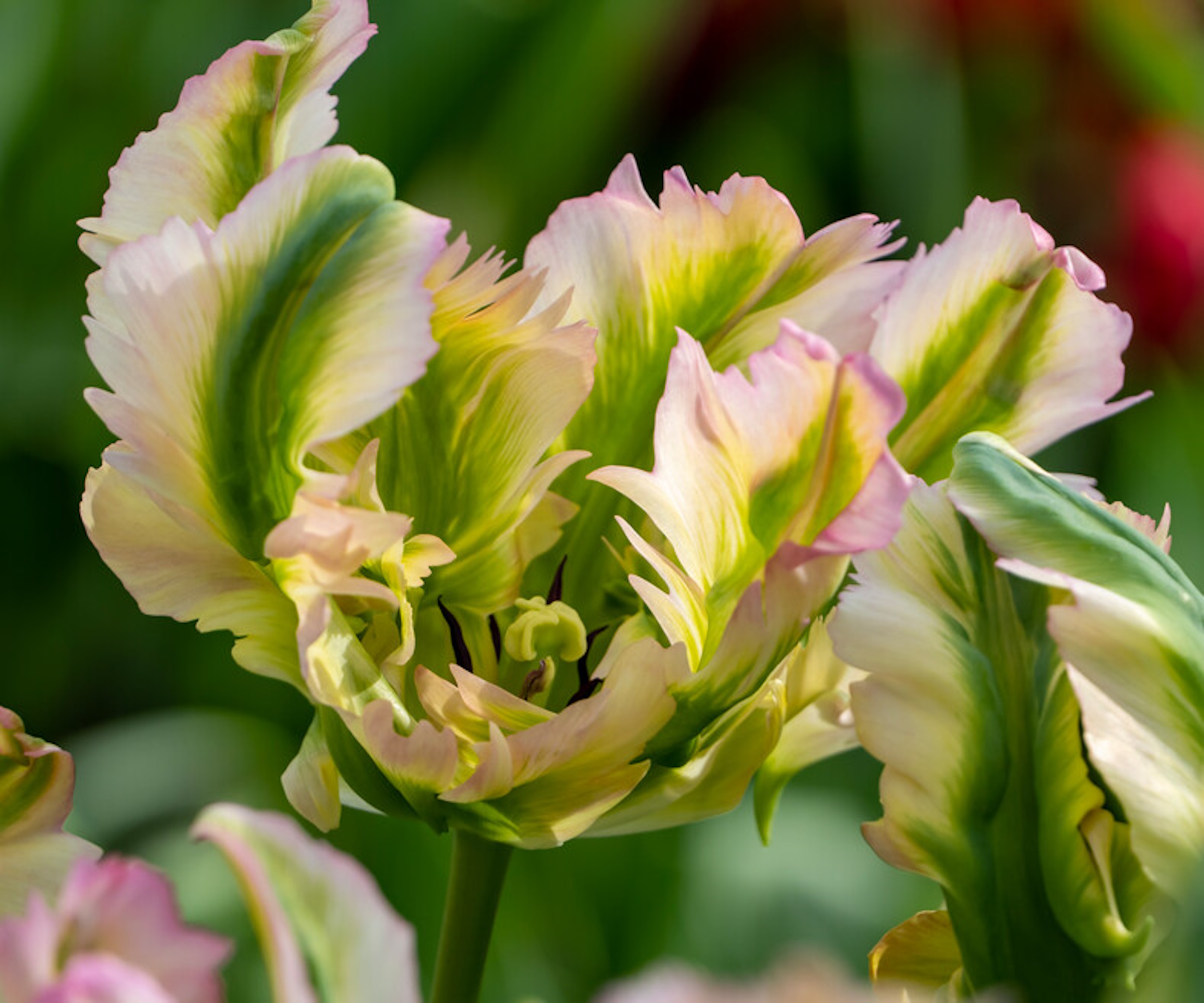
If you prefer something that looks like it stepped out of a Monet painting, I’d recommend parrot tulips. Once you've grown your first garden bed filled with parrots, you will start to understand why the Dutch were willing to pay such exorbitant prices for the rare ones during the period of history known as Tulipmania in the 17th century.
With their ruffled blooms and beautiful brush marked petals, these spring flowering bulbs add glamour to beds and borders. The largest of all tulips, Parrots deserve our attention, so be sure to place them where they can admired.
Plant in groups along a drive or entranceway for a memorable welcome or cluster together in statement planters placed either side of a porch or doorway. They also look stunning displayed indoors. Once cut, tulips have a unusual tendency to keep growing. Bear this in mind when caring for tulips in a vase and trim the stems if needed. The flowerheads will also turn towards the light which can lead them to contorting into amazing shapes.
Darwin hybrid tulips
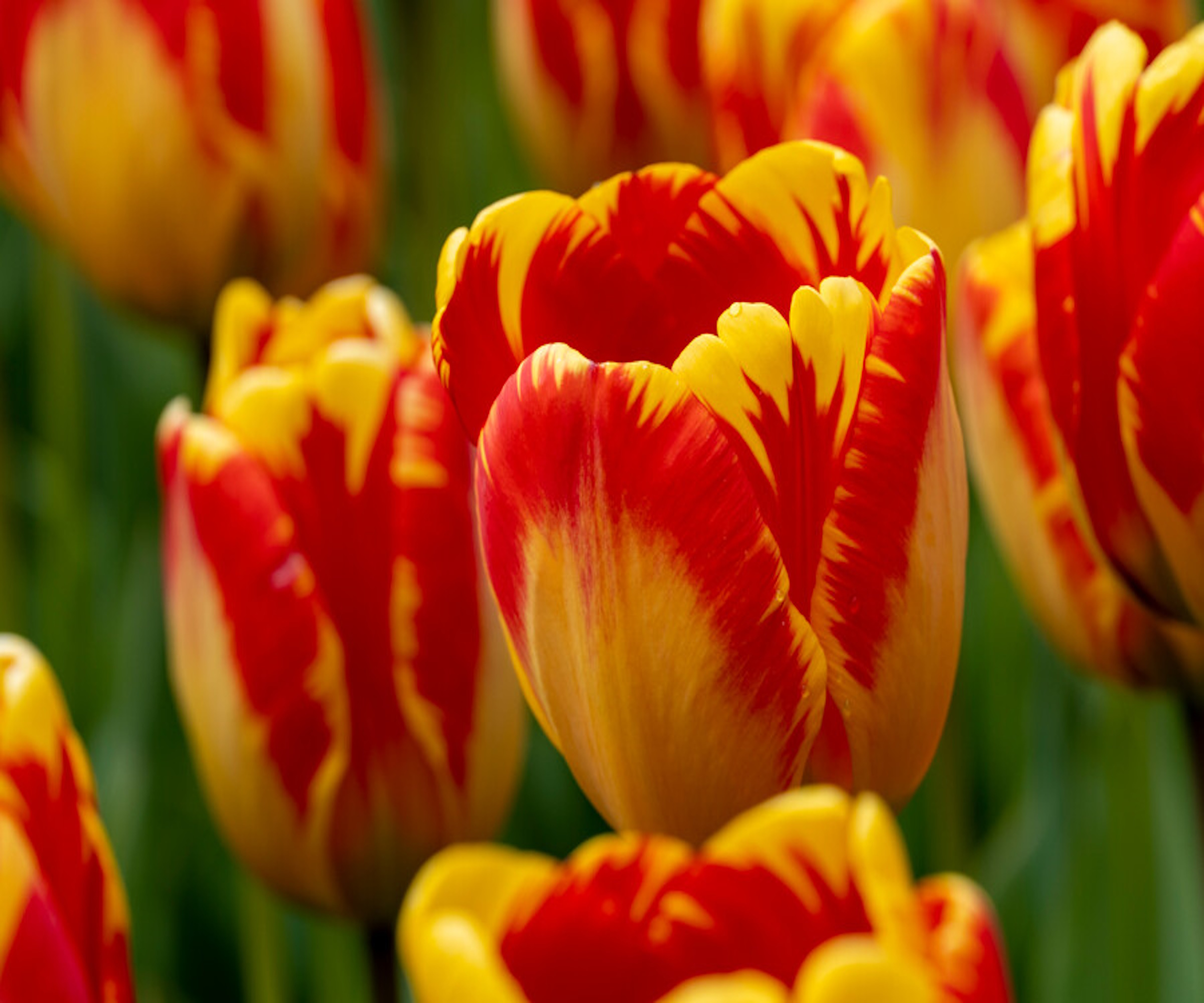
Standing at an impressive 20-27 inches (50-70cm) tall, these surprisingly robust tulips will bring color to any corner of the yard. Happy in sun or part shade, they withstand wind and rain, hot and cold temperatures.
Long-lasting they come in all shapes, sizes and color combinations including single shades, bi-colors and intricate markings such stripes, feathers and flames.
These beauties are a cinch to grow, as long as you have plenty of good sun and drainage. Darwins, such as these 'Pink Impression' tulip bulbs from Walmart, have big, showy blooms and a very classic tulip shape, while also blooming relatively early in the season. Some favorites include ‘Red Impression’, ‘Banja Luka’, ‘Golden Parade’, and ‘Apricot Impression.
Double tulips
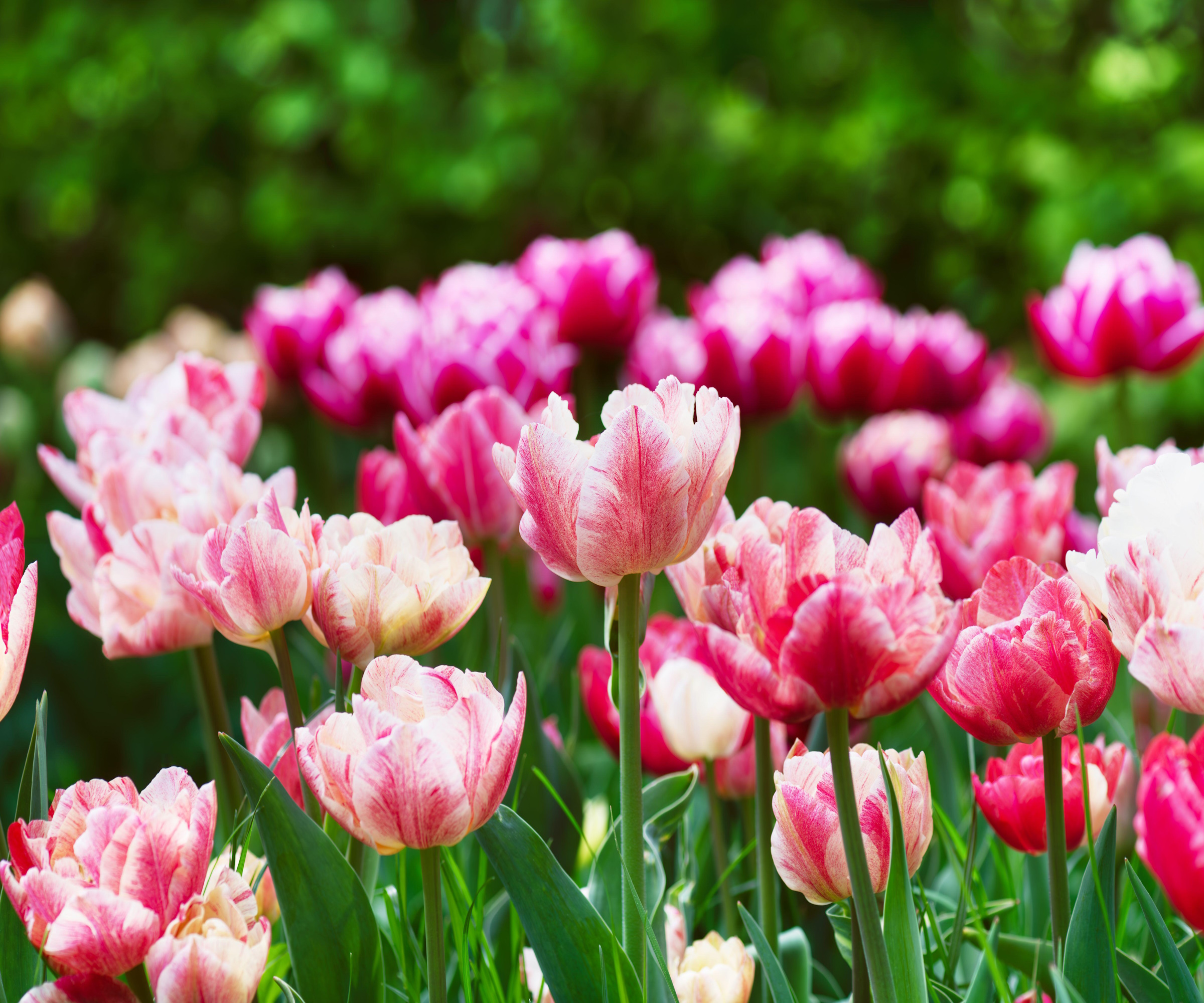
If you love peonies, carnations and blowsy old-school roses, then double tulips are for you. With their full, ruffled blooms made up of multiple layers of petals, they add a flamboyant note to your garden.
Unlike some of the more classic varieties of tulips, these blooms can be pretty fleeting and perform best in a sheltered, sunny spot. Plant in large groups, around 12-15 bulbs at a time, for a spectacular display either in the ground, a raised bed or a large planter with plenty of drainage.
Prolong the display by choosing several varieties that flower at different times. Double early tulips – such as rose pink ‘Foxtrot’ and cream and green ‘White Mountain’ flower during March and April, while Peony types, such as the eye-catching tulip ‘Ice cream’ and orange-yellow ‘Sunlover’, wait until late April-May to dazzle.
FAQs
What is the difference between a tulip type and a variety?
Tulip blooms come in all shapes and sizes. To help distinguish between the various characteristics, this vast family is divided into 15 different types. These include familiar favorites such as Triumph, Species and Parrot, along with others that have more self-explanatory titles such as Fringed, Double Early or Lily-flowered.
Within each group are a varying number of individual tulip varieties. The sultry, almost-black 'Queen of Night' tulips, available from Amazon, and mango-coloured 'Dordogne' are two classic varieties belonging to the Single Late type.
Which of the tulip types are best for cutting?
All tulips will fill a vase with glorious spring color, and last for around 5-10 days, but knowing the exact stage to cut the stems can make all the difference to your indoor display. Single tulips are best harvested as soon as the bud begins to ‘crack’ and the color of the petals starts to show. Parrots, Double-early and Peony types last longer in the vase, if they are left growing until the buds are in full color but not yet fully open.
If you are inspired to find out more about tulips and how they can bring impact to your home and yard, then discover what to do with the bulbs after they bloom.







